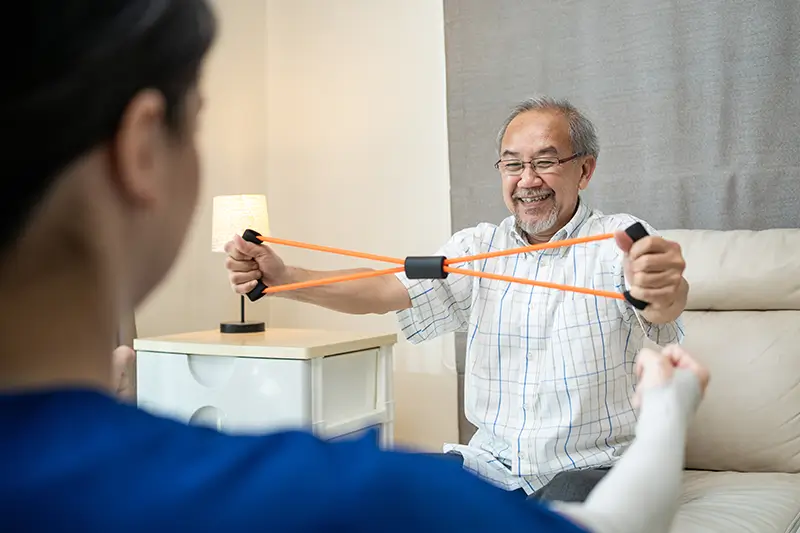Rehabilitation therapy is provided to patients to help them get back to their previous healthy level of musculoskeletal function after experiencing any kind of disruptive event such as an injury, illness or a surgical procedure. Physical therapists use aftercare codes to report diagnoses in such a condition. You should be careful about ICD-10 aftercare codes when it comes to physical therapy medical coding. ICD-10 provides Z codes to specify such diagnoses. However, it is not possible to simply map the V57 series of codes (used for aftercare) in ICD-9 to ICD-10-CM codes.
The Z codes for aftercare visits cover the scenarios in which the initial treatment of a disease has been performed but the patient needs continued care during the healing/recovery phase or for the long-term consequences of the disease. An example for this situation is post-operative care in which the condition that led to surgery no longer exists but the patient still needs therapy to return to a healthy level of functioning. The appropriate use of these codes is as follows.
- Principal diagnosis refers to the condition for which the rehabilitation service is provided. In ICD-10 medical coding, you must report an aftercare code as the principal diagnosis when the condition for which the rehabilitation is performed does not exist any more. For example, if the patient underwent a hip replacement surgery due to severe degenerative osteoarthritis and that condition no longer exists, you should report Z47.1 (aftercare following joint replacement surgery) as the principal diagnosis.
- Do not use the aftercare Z code when the treatment is directed at a current, acute disease. Use the appropriate diagnosis codes in these cases. The aftercare Z codes should not be used for aftercare for injuries that are still present. In the case of injury codes with ICD-10, the appropriate 7th character (D) identifies subsequent care with the diagnosis code. The aftercare for injuries can be reported with the acute injury code with the appropriate 7th character for subsequent encounter. For example, if the aftercare is provided for the sprain of medial collateral ligament of the knee, you should report S83.411D (Sprain of medial collateral ligament of knee, subsequent encounter).
- Aftercare Z codes should be used in conjunction with other aftercare codes, diagnosis codes and/or other categories of Z-codes in order to provide more details regarding the specifics of the aftercare encounter/visit, unless otherwise directed by the classification. For example, consider the patient is seen by the physical therapist after a joint replacement surgery to treat osteoarthritis in the left knee. The relevant codes are Z47.1 (Aftercare following joint replacement surgery) and Z96.652 (Presence of left artificial knee joint)
Tips for Accurate Aftercare Coding
Ensure that your coders pay close attention to the specific diagnosis for which the rehabilitation services are performed and whether the diagnosed condition still exists in the patient. To achieve this, your practice can consider the following strategies:
- You should work closely with the transferring facilities so that you can ensure the facilities provide specific documentation concerning the principal diagnosis.
- Provide better guidance for case managers and physicians regarding the importance of documenting specific reason for admission into the rehabilitation facility.
- Give proper training to your coders regarding new sequencing changes.
Also, you can ease your workload by outsourcing medical coding tasks to a reliable medical billing and coding company that provides the service of well-trained ICD-10 coders.




